Conserving and Developing the Sarus Crane Population at Tram Chim National Park
The People's Committee of Dong Thap province has approved a project for the conservation and development of the sarus crane at Tram Chim National Park from 2022 to 2032, with a total estimated cost of over 184 billion VND.
The People's Committee of Dong Thap province has approved a project for the conservation and development of the sarus crane at Tram Chim National Park from 2022 to 2032, with a total estimated cost of over 184 billion VND.
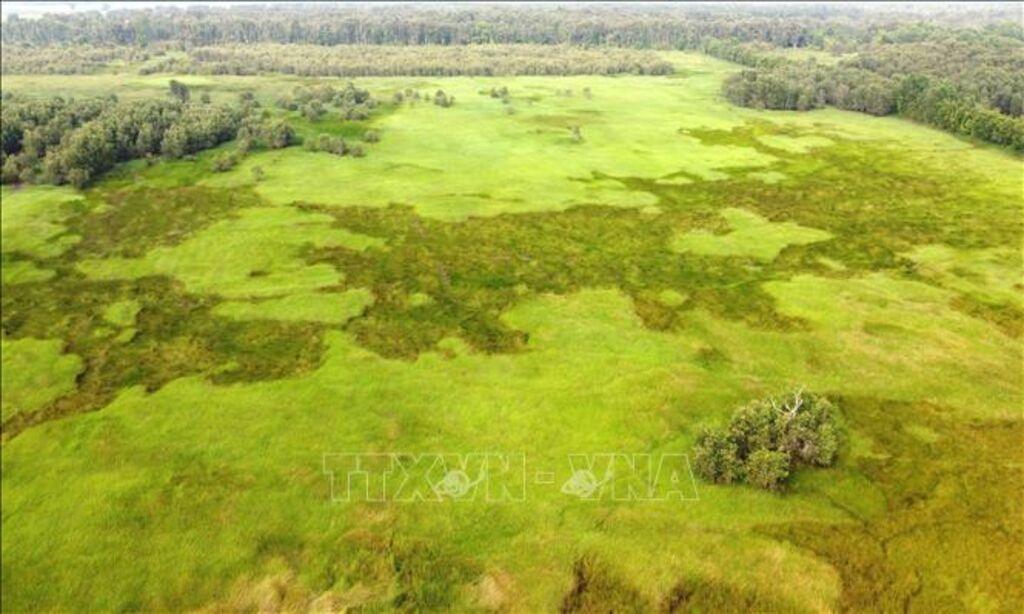
Tram Chim National Park has an abundance of Eleocharis dulcis, a food source for sarus cranes. (Photo: Nhut An)
The sarus crane, a rare bird listed in the World Red Book, is endangered and in need of protection. It is a symbol of Tram Chim National Park in particular and Dong Thap province in general.
The People's Committee of Dong Thap province has approved a project for the conservation and development of the sarus crane at Tram Chim National Park from 2022 to 2032, with a total estimated cost of over 184 billion VND. The project includes activities such as receiving, raising, researching reproduction, and re-releasing sarus cranes; restoring the ecosystem and habitat; developing sustainable ecological agricultural production models; and investing in infrastructure and equipment.
Mr. Nguyen Phuoc Thien, Vice Chairman of the Dong Thap Provincial People's Committee, stated that Tram Chim National Park is well-known because, in the past, a large number of sarus cranes migrated to the park annually. The image of the sarus crane is even featured in the province's logo. In recent years, due to climate change and the impact on the ecological environment, the number of cranes migrating to Tram Chim has gradually decreased, and in some years, they have not returned at all. Faced with this situation, Dong Thap has implemented the Sarus Crane Conservation and Development Project to restore the crane population.
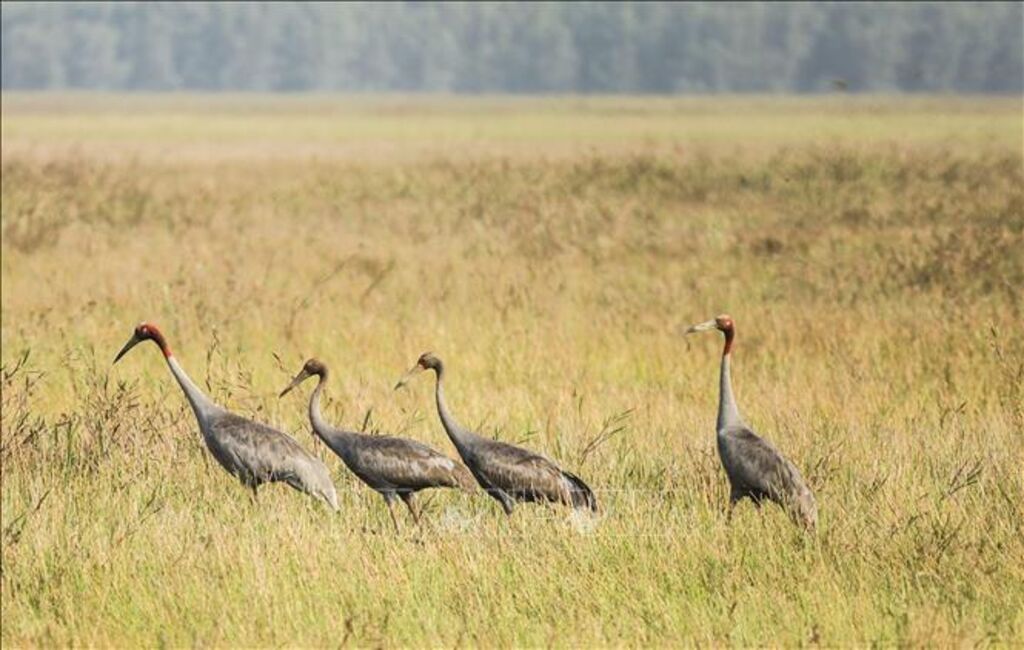
The sarus crane, listed in the World Red Book, once appeared at Tram Chim National Park (Tam Nong district, Dong Thap province).
The restoration and development of the crane population at Tram Chim National Park is significant for biodiversity conservation and the cultural and spiritual life of the local people. The success of the project contributes significantly to the conservation of the sarus crane population in the lower Mekong River region, which is facing the threat of extinction. This demonstrates Vietnam's commitment and sense of responsibility in participating in international institutions.
The project aims to restore and develop the sarus crane population at Tram Chim National Park through captive breeding and release back into the wild. Within 10 years (from 2022 to 2032), 100 cranes will be raised and released, with at least 50 individuals expected to survive. The released sarus cranes will be able to reproduce naturally, exist in the wild, and potentially live year-round at Tram Chim National Park.
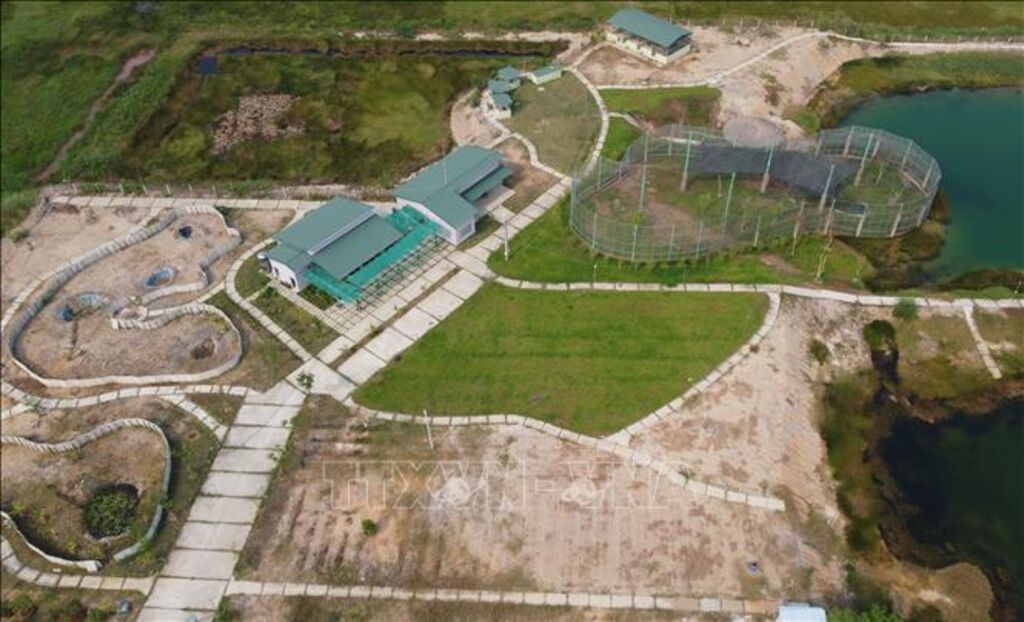
Infrastructure is being built to support the Sarus Crane Conservation and Development Project at Tram Chim National Park. (Photo: Nhut An)
The project strives to receive 30 six-month-old cranes from Thailand for breeding, care, and release into the natural environment during the period 2022-2028. Infrastructure and breeding facilities will be completed to support the entire process. The Tram Chim National Park ecosystem will be restored through appropriate water regulation and research-based measures to create a suitable habitat for sarus cranes. By 2028, approximately 200 hectares of rice fields are expected to be converted to ecological production models, with a focus on organic agriculture in the neighboring areas of Tam Nong district.
In the period 2029-2032, the province will continue negotiations with Thailand to receive an additional 30 six-month-old cranes, with an estimated 40 cranes to be bred from the initial parent flock. In addition, the locality will create a distribution map of cranes living inside and outside Tram Chim National Park. Technical staff at the National Park will be able to successfully care for, breed, and release cranes into the wild; gradually convert ecological rice-growing areas to organic rice production (meeting domestic or international standards).
Source: Nhut An - https://chinhsachcuocsong.vnanet.vn
News

Tram Chim National Park Ready to Bring the Sarus Cranes Home
Tram Chim National Park is completing the final steps to prepare for bringing the sarus cranes home. This is an important part of the Conservation and Development Project for the Sarus Crane (2022 - 2032), aiming to restore the population of this rare bird species in the Dong Thap Muoi region."

Sarus Cranes relocated from Thailand recover well at Saigon Zoo
On the morning of April 13, at Saigon Zoo, where six cranes transferred to Vietnam from Nakhon Ratchasima Zoo (Thailand) are being quarantined, experts from Thailand, Vietnam, and the International Crane Foundation discussed and assessed the health status of the cranes after three days of isolated care.

Dong Thap Welcomes First 6 Sarus Cranes from Thailand
To restore and expand the population of sarus cranes in Tram Chim National Park through captive breeding and reintroduction efforts, Dong Thap Province received the first six cranes from Thailand on the evening of April 10, 2025.

Controlled burn on Zone A1, Tram Chim National Park
Fire has played a significant role in the creation and administration of Tram Chim National Park throughout the last four decades. Sometimes fire destroys, and in many cases fire helps regenerate.
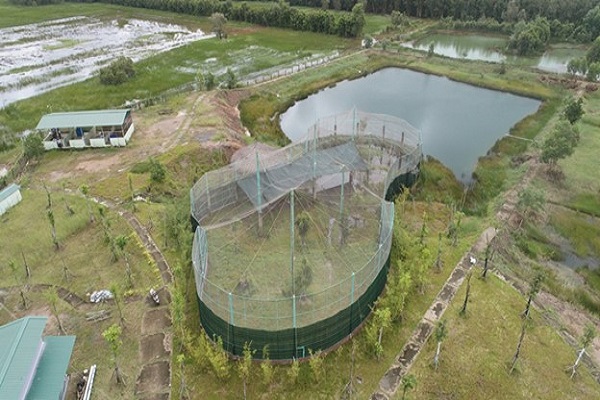
Investing in Infrastructure to Serve the Sarus Crane Recovery Program
The Chairman of the Provincial People's Committee approved the infrastructure project for the second phase of the Sarus Crane development and restoration program at Tram Chim National Park. Tram Chim National Park serves as the project's investor.
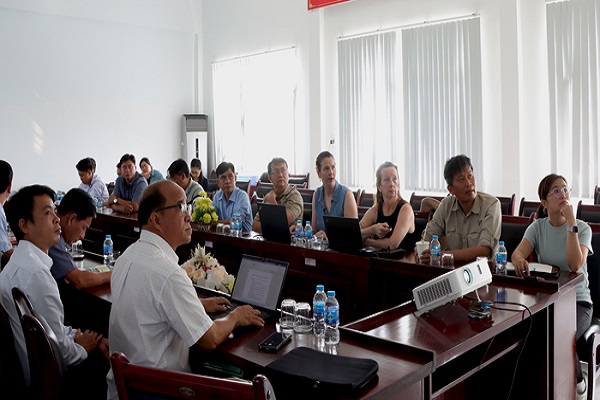
Experts from the International Crane Foundation guide how to care for and raise sarus cranes
One of the primary tasks of the expert delegation from the International Crane Federation (ICF) during their week-long stay in Tram Chim National Park (Tam Nong area) was to assist Tram Chim National Park in completing the necessary stages for supplies and qualified workers to guarantee that the sarus crane captive breeding procedure is carried out.
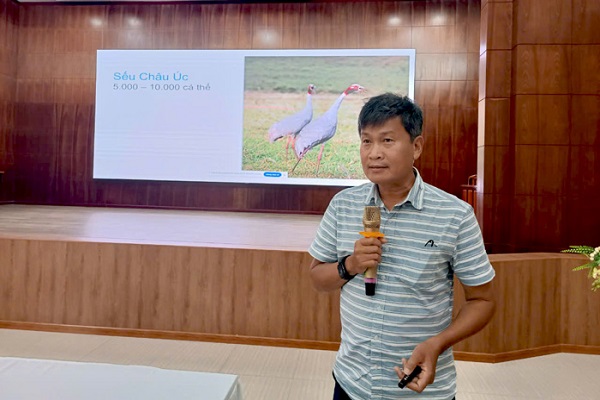
Dong Thap province: Media training on the Sarus Crane Conservation Project
In the morning of November 20, Tam Nong District People's Committee arranged a training session on the topic of Sarus Cranes in Tram Chim National Park with the goal of educating, informing, and encouraging their development and restoration. This second course was offered both directly and online to leaders of several departments of Dong Thap province, and People's Committees at the district level.
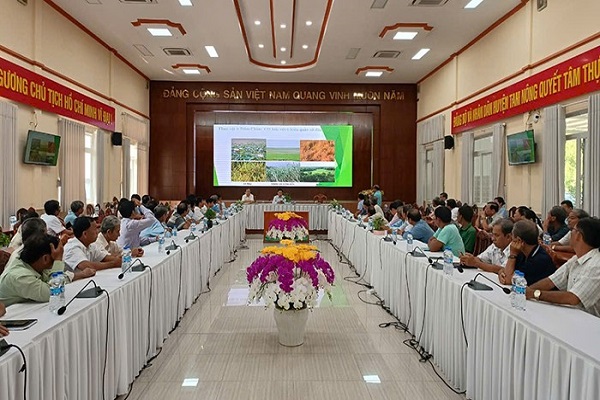
Communication skills training for the Sarus Crane Development and Conservation Project
On November 14–15, Tam Nong District People's Committee held a training session to prepare knowledge and communication skills for the Project on the Sarus Crane Development and Conservation at Tram Chim National Park in 2024.
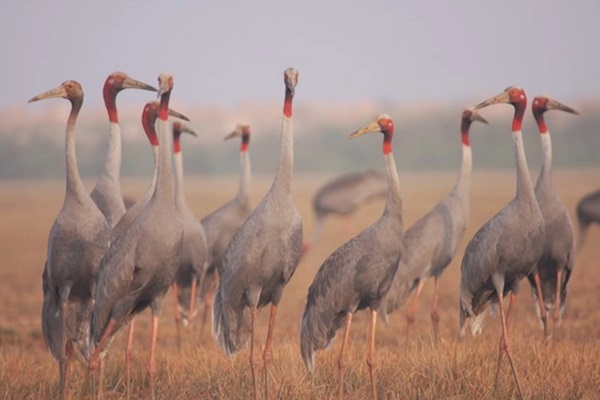
Dong Thap spends nearly VND185 billion to bring sarus cranes back to Tram Chim
(Dan Tri) - For the past 2 years, the sarus cranes, a symbol of Tram Chim National Park (Dong Thap), have not returned to the park. Recently, the locality has approved nearly VND185 billion to restore the landscape to bring the cranes back.


